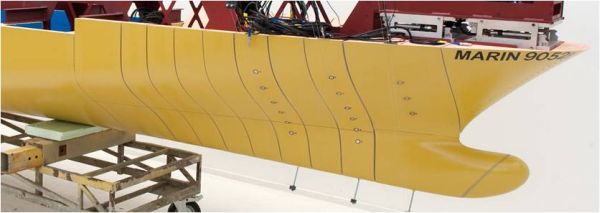Whipping and Slamming
Backgrounds
Internal forces due to slamming are today only incorporated in the Rules by a adding a percentage to the design loads. Direct calculations of the long term distribution of the loads including slamming induced whipping is not yet possible today; also a fatigue analysis including whipping cannot be done by direct calculations. Next to this, slamming is considered to be the primary reason to reduce speed for a ship in waves.
The considerations above initiated a development in the CRS for a practical method to calculate bow flare slamming on ships sailing at speed in waves. This development started in 2000 with the ELAST project and continued with the WHIP(1) and WHIP2 projects. The results to date of these projects are:
• Update of PRECAL program to include flexural modes.
• Development of TDPP program including flexural modes.
• Incorporation of a 2D boundary element method for slamming calculations in TDPP.
• Development of a 3D theory for slam force calculations; first implementation in a stand-alone program.
• Database of results of model tests of a free sailing segmented model with a flexible beam.
• Database of results of impact loads and local pressures on the bow of a captive model .
• Database of results of model tests of a free sailing model with 10 segments in the bow area.

Objectives
The objective of the present project is to finalize the developments indicated above. Essential for this is the development of the restructured PRETTI program (successor to TDPP). This program is then, just as Precal_R, based on the generalized modes principle in which deformation modes are easily defined and incorporated in the calculations. The program to calculate 3D slam forces will be fully integrated as the 2D boundary element program.
Next to this, the results of the model experiments carried out in the WHIP2 project will be used to “calibrate” the 3D method for slam force calculations.
Expected Restults
• A program that simulates a ship sailing in waves at speed and allows the determination of the impulsive forces on the bow and the whipping response of the hull.
• A validation of this program based on a series of model experiments of a ferry.
• A methodology to tune the above program for a specific ship by means of dedicated experiments or CFD calculations.
